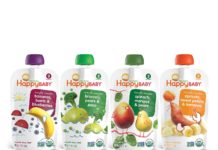
When you're just trying to buy the best beverage for your family, the dairy aisle can be a daunting place. From nonfat to full fat, conventional to organic, almond to soy, lactose-free to A2, there's a milk (or plant-based "milk") to match every appetite and attitude. Among them is grass-fed milk, a rapidly growing category with a fresh-from-the-farm name that sounds worthy of superfood status. But is it, really?
It makes sense that grass-fed milk would be an easy sell to parents and other health-conscious folks. "Many people perceive that grass-fed cows are healthier in how they are treated and what they eat and so therefore, their milk should be healthier," says Tanya Altmann, M.D., a Southern California-based pediatrician.
It's true, it seems, that that milk from grass-fed cows contains more of some important nutrients than other milks. A 2018 study from the journal Food Science & Nutrition found it was higher in omega 3 fatty acids, the essential fatty acids important for brain and eye health that our bodies can't make, than other milks.
"Omega-3s are especially important for growing children, as their intake in infancy and childhood could potentially impact their long-term development," says Diana K. Rice, R.D., CLEC, owner of The Baby Steps Dietitian and mom of two girls ages three and one. But here's the rub: The amount of omega 3s in grass-fed milk, while more than double the amount in conventional milk, is just not that much. "A 100 g serving of salmon, for example, has 2.25 grams of omega-3 fatty acids, whereas a 100 g serving of grass-fed milk has just .05 grams," says Rice.
Grass-fed milk is also higher in nutrients like vitamin E, iron, and conjugated linoleic acid, a fatty acid that may play a role in preventing heart disease and obesity. But, like omega 3s, it's not in amounts that are likely to make a huge dent in your dietary needs (or the needs of your kiddos). As for the nutrients like calcium, protein, potassium, and vitamin D milk is best known for? You'll find roughly the same mix in all milk whether it's grass-fed, organic, or conventional. "Ultimately, each type of milk packs the same nutrient punch," says Dr. Altmann.
Grass-Fed vs. Conventional
The 2018 study found that 100 grams of conventional milk had around .02 grams of omega 3s while the same size serving of grass-fed milk had around .05 grams (for reference, an adult woman needs around 1.1 grams per day; a baby .5 grams). "An extra bite of fish would more than make up for it," says Rice. What you will see a major difference in: The cost. Grass-fed milk comes in at around 3-4 times more than conventional milk per ounce.
Grass-Fed vs. Organic
Despite the bucolic images on some organic dairy packaging, an organic label does not mean that the cows that produced your milk munched exclusively on grass. The law requires them to spend a minimum of 120 days of the year grazing for at least 30% of their intake; they will also be fed organic grain throughout the year. Thanks to that access to grass, the nutrients values in organic milk tend to be a little higher than those in conventional milk. Grass-fed milk will still give you the most omega-3s, however, the level is still not high enough to make a huge difference in your diet. As for cost, organic and grass-fed are more comparable, with organic saving you around a penny per ounce.
If You Go Grass-Fed
Choose full fat. The reason: Most of the nutritional advantages of grass-fed milk, however small, are found in the fat portion of the milk. Reduced or nonfat milk would, by definition, remove those nutrients. The American Academy of Pediatrics recommends full-fat dairy for children between the ages of one and two because they need the extra calories for growth and fats for brain development. If your family prefers low-fat milk, then you may want to rethink the extra cost of grass-fed products.
Popular Grass-Fed Milk Brands
Brands like Maple Hill Creamery, Horizon Organic, and Organic Valley sell grass-fed milk around the country; smaller, regional brands may be available at your local stores. Since the government doesn't currently regulate what "grass-fed" means, there are several independent third-party certifications that you can look for to increase the chances you're getting a reliably grass-heavy product: American Grassfed Association, Certified Grassfed by AGW, PCO Certified 100% Grassfed, and NOFA-NY Certified 100% Grassfed are all good options.
Where to Buy Grass-Fed Milk
Local grocery stores, as well as big stores like Target and Walmart, now carry national brands of grass-fed milk. Smaller stores and farmer's markets may be good places to find local grass-fed companies.





